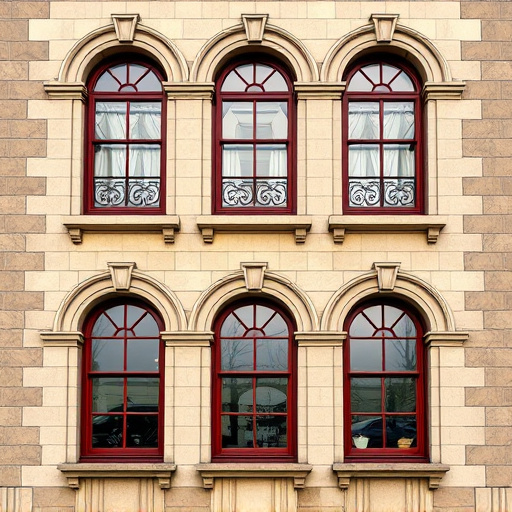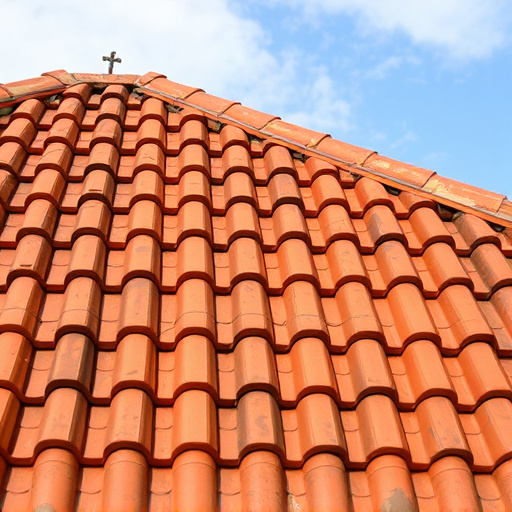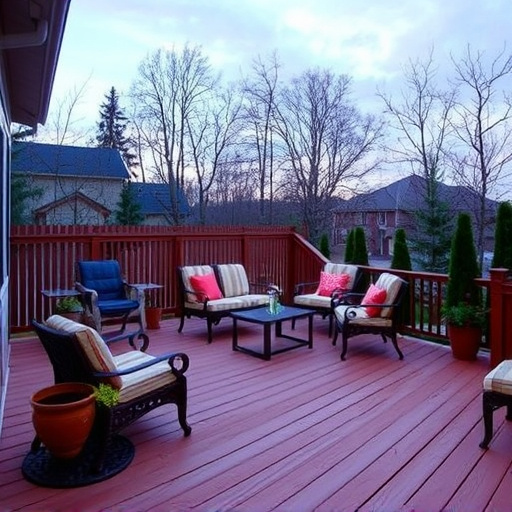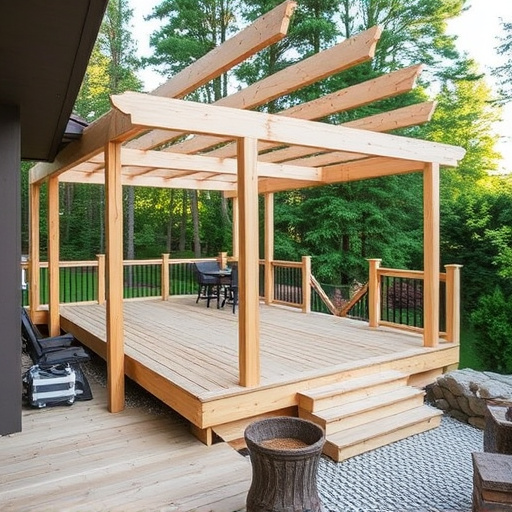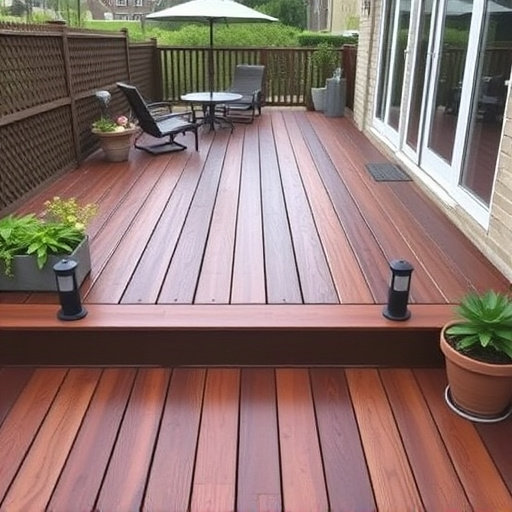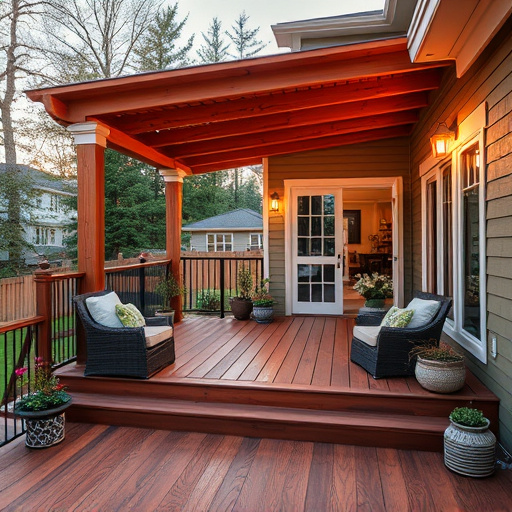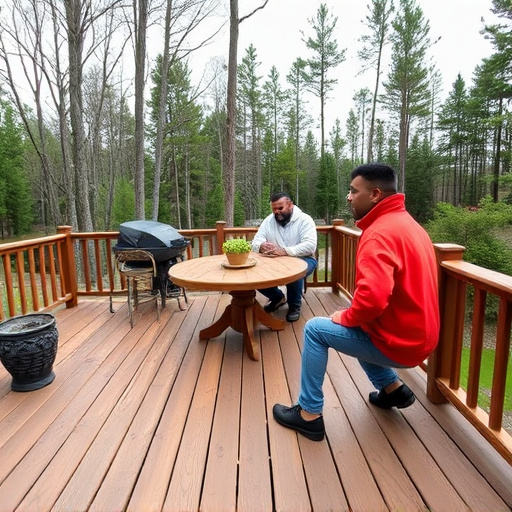Estimating slip-resistant deck building costs involves assessing project scope, material types (like composite decking), labor tasks, market prices, permits, taxes, and contingencies. Understanding these factors ensures accurate budgeting, client satisfaction, and builder profitability for safe, high-value decking solutions.
Looking to build a new deck with slip-resistant features? Understanding cost estimation is crucial before starting your project. Deck builders consider various factors, including materials and labor, to deliver accurate quotes. This article guides you through the process, focusing on key cost drivers for slip-resistant decking and providing a step-by-step guide to estimating project expenses. By the end, you’ll be equipped with the knowledge to navigate deck building costs effectively.
- Understanding Deck Building Cost Factors
- Materials & Labor: Key Cost Drivers for Slip Resistant Decking
- Accurately Estimating Project Expenses: Step-by-Step Guide
Understanding Deck Building Cost Factors
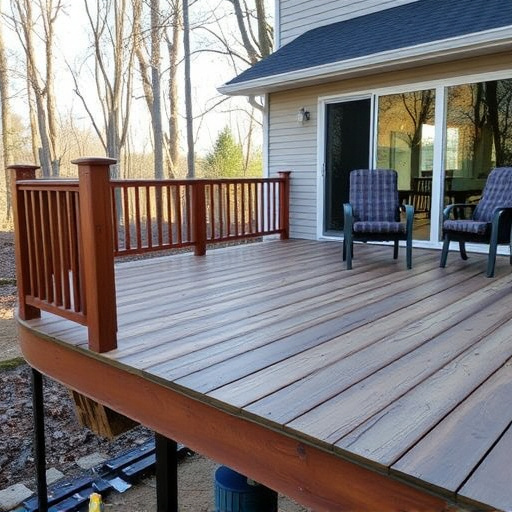
When it comes to estimating costs for a deck building project, several key factors come into play. One of the most important considerations is the type of decking material chosen, such as slip-resistant surfaces that enhance safety and add value to your outdoor space. These materials can vary widely in price depending on their quality, durability, and aesthetics. For instance, composite decks, known for their low maintenance and resistance to fading, often carry a higher upfront cost compared to traditional wood options.
Additionally, the size and complexity of your deck design significantly impact the overall pricing. Larger decks require more materials and labor, while intricate designs with custom features or built-in seating areas will naturally drive up costs. Other factors like site preparation, local building codes, and additional services such as roof consulting or siding services (for a complete outdoor renovation) can also contribute to the final price tag. Understanding these cost drivers is crucial for obtaining an accurate estimate from deck builders, ensuring your project stays on budget and meets your expectations.
Materials & Labor: Key Cost Drivers for Slip Resistant Decking
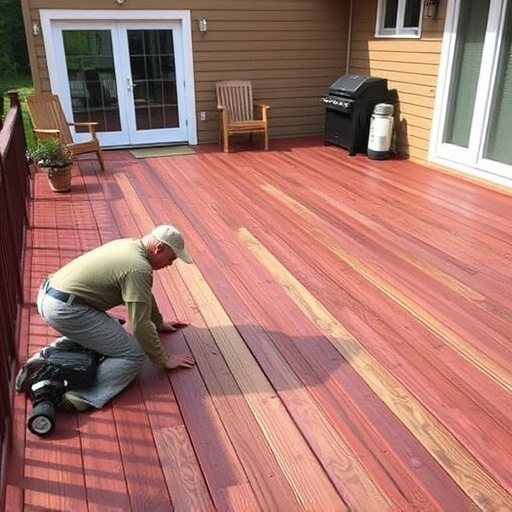
When it comes to estimating costs for slip-resistant decking projects, understanding the key cost drivers is essential. Materials and labor are the primary factors that influence pricing in this specialized construction area. The choice of materials plays a significant role, as different options offer varying levels of slip resistance, durability, and aesthetics. For example, composite decking with built-in anti-slip technology will be more expensive than traditional wood but provides superior traction and longevity.
Labor costs also vary based on the project’s complexity and the deck’s size. Slip-resistant decking installations often require additional skill and safety measures to ensure workers can navigate the surface safely while installing the materials. Moreover, factors like site accessibility and the need for specialized tools or equipment can impact labor expenses, especially in commercial roofing or siding projects where roof consulting is necessary to assess the best slip-resistant solutions.
Accurately Estimating Project Expenses: Step-by-Step Guide
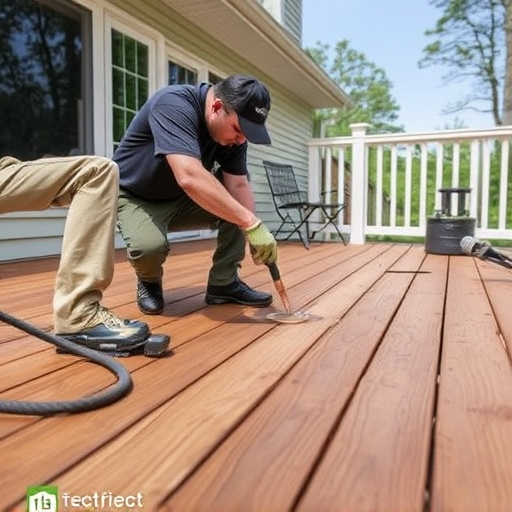
Estimating project expenses accurately is a critical step for any deck building endeavor, ensuring both client satisfaction and builder profitability. Here’s a straightforward guide to help deck builders navigate this process, especially when focusing on slip-resistant decking solutions.
1. Assess Project Scope: Begin by thoroughly understanding the project’s scope, including the size and layout of the deck, the type of materials to be used (like slip-resistant decking options), and any additional features such as railings or stairs. This step involves detailed discussions with clients to gather all necessary details, ensuring no unforeseen expenses arise later.
2. Research Material Costs: Gather current market prices for the chosen decking materials, particularly slip-resistant varieties. Consider factors like quantity, quality, and any special requirements. For instance, if a client opts for high-end composite decking or specialized anti-slip coatings, these will impact overall costs.
3. Factor in Labor Costs: Labor is a significant expense, so break down the project into tasks: from preparation (site clearance and grading) to construction (deck framing, fitting, and finishing). Estimate time and wages for each task, considering the skill level required for slip-resistant decking installations which may need specialized techniques or tools.
4. Account for Additional Costs: Don’t overlook potential extra expenses such as permit fees, taxes, and insurance. Also, factor in contingencies for unforeseen issues like storm damage repair or siding replacement during the project’s progress. These variables can significantly impact the bottom line, so it’s best to plan accordingly.
When estimating costs for your deck building project, especially when incorporating slip-resistant features, a thorough understanding of material and labor costs is key. By following the step-by-step guide provided, you can accurately forecast expenses and ensure a successful and safe deck installation. Remember, slip-resistant decking enhances both the aesthetics and functionality of your outdoor space, so investing in quality materials and professional labor is essential for a durable and safe surface.

